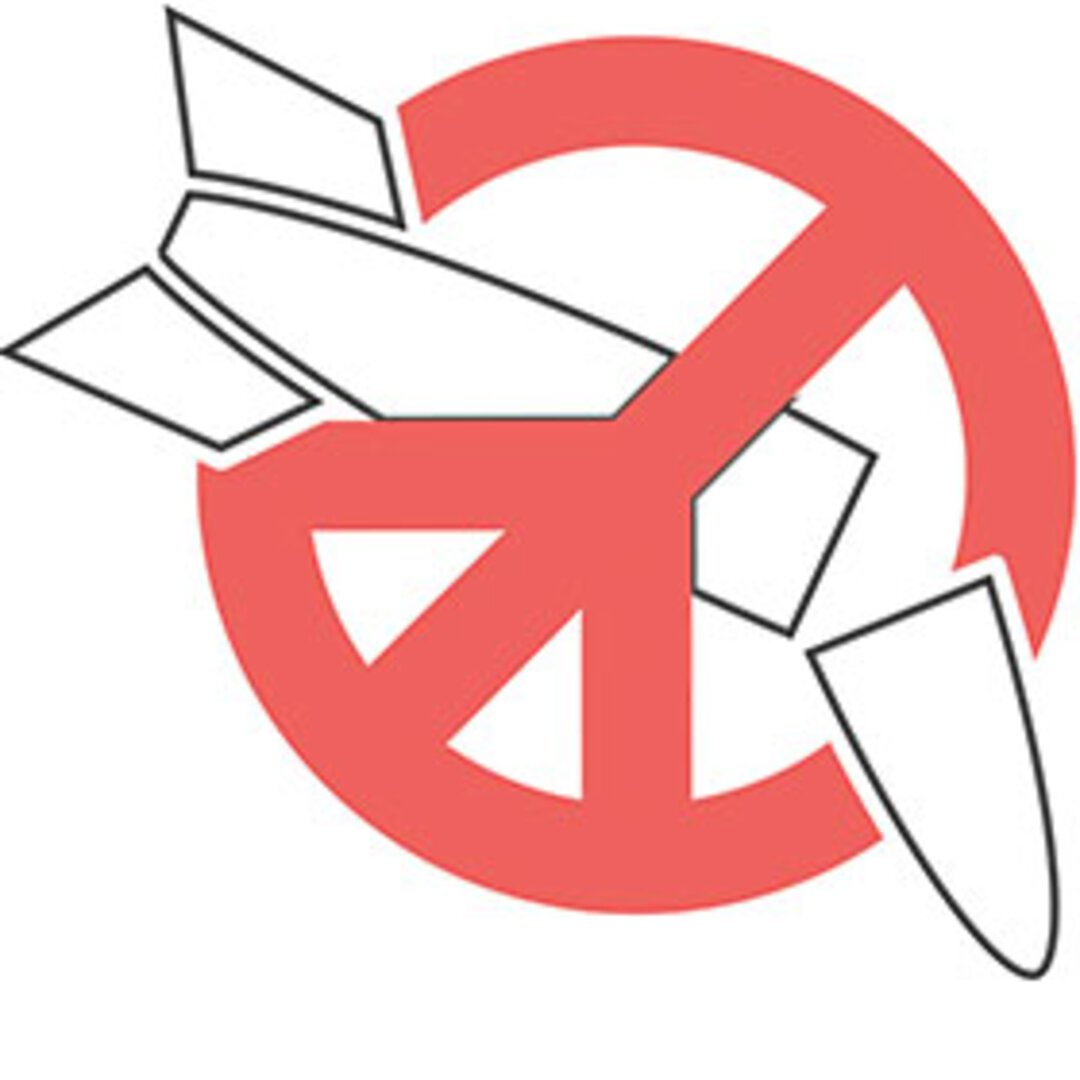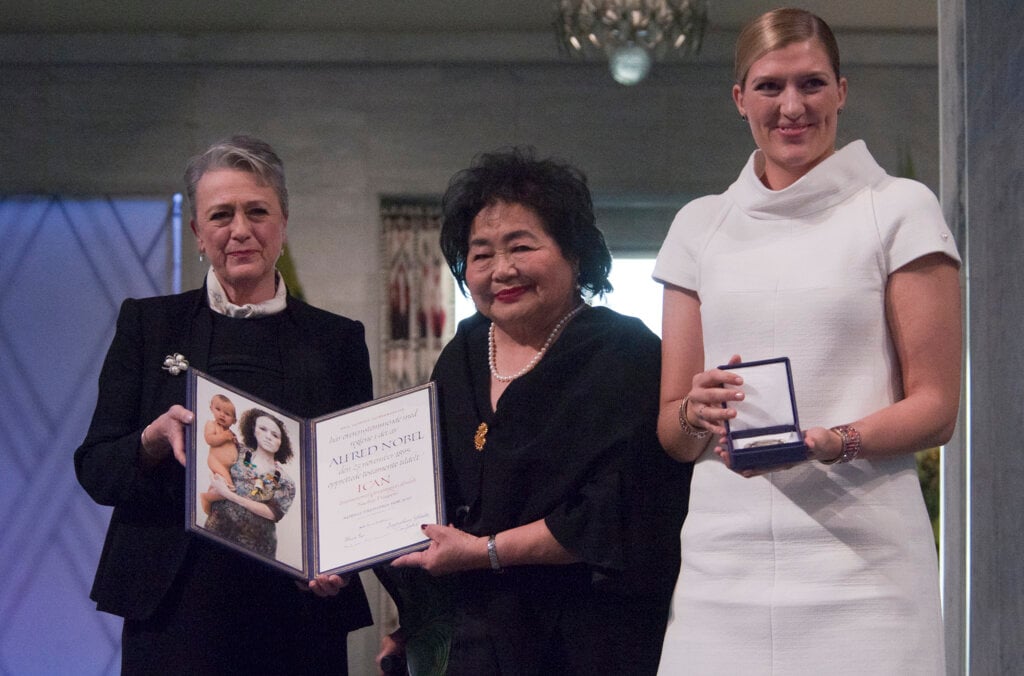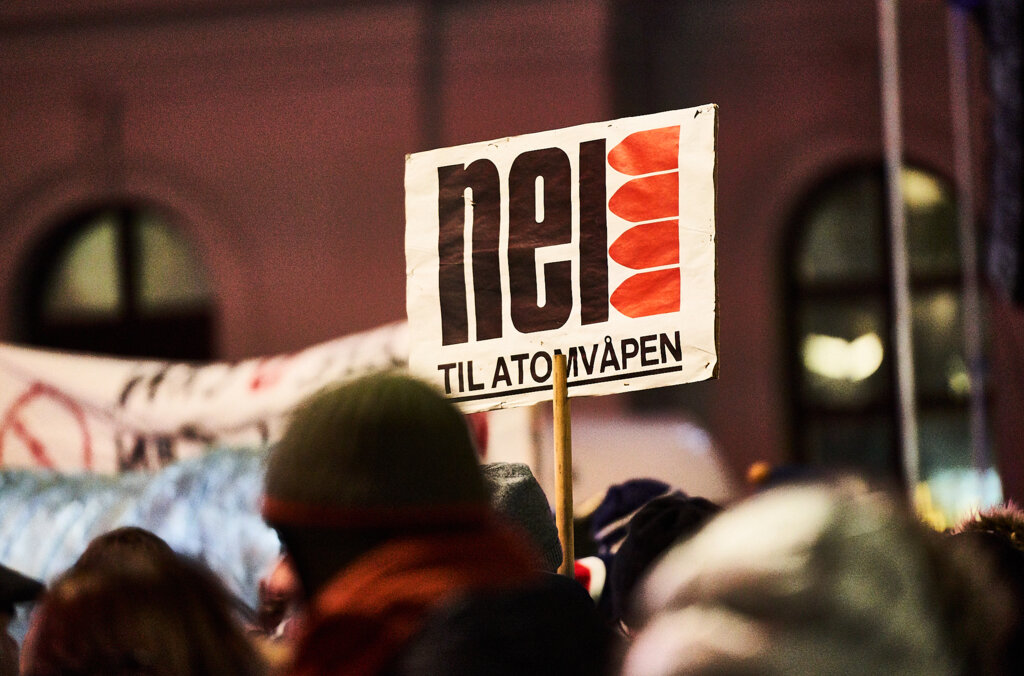International Campaign to Abolish Nuclear Weapons
Speed read
The International Campaign to Abolish Nuclear Weapons (ICAN) was awarded the Nobel Peace Prize for its work to draw attention to the catastrophic humanitarian consequences of any use of nuclear weapons and for its groundbreaking efforts to achieve a treaty-based prohibition of such weapons.

Full name: International Campaign to Abolish Nuclear Weapons (ICAN)
Native name: International Campaign to Abolish Nuclear Weapons (ICAN)
Founded: 2007, Australia
Date awarded: 6 October 2017
What is ICAN?
ICAN stands for the International Campaign to Abolish Nuclear Weapons. They mobilise people in all countries to persuade their governments to start negotiating a ban on nuclear weapons. ICAN was formed in 2007, and is a global movement of non-governmental organisations from around 100 countries. ICAN is the leading civil society organisation working to establish an international treaty banning nuclear weapons. On 7 July 2017, 122 UN member states agreed to adopt the proposed Treaty on the Prohibition of Nuclear Weapons. ICAN has been awarded the Nobel Peace Prize ”for its work to draw attention to the catastrophic humanitarian consequences of any use of nuclear weapons and for its ground-breaking efforts to achieve a treaty-based prohibition of such weapons“.
"This award shines a needed light on the path the ban treaty provides towards a world free of nuclear weapons. Before it is too late, we must take that path."
- ICAN, 7 October 2017
A naive peace prize?
Some critics claim that a nuclear-free world can only be achieved through negotiations, not a ban. The Nobel Committee states that an international ban will not by itself eliminate a single nuclear weapon. However, history has shown that international law and bans lead to disarmament when it comes to land mines, cluster bombs and chemical weapons. The Committee emphasises that the next steps towards a nuclear-free world must involve the nuclear powers. This year’s Nobel Peace Prize is therefore a call to these countries to start serious negotiations, aiming at a step-by-step abolition of all nuclear armaments.
Why now?
The Nobel Committee points out that we live in a world where the threat of nuclear weapons is greater than for a long time. Today, 9 countries have more than 15,000 nuclear weapons in total. Some states are modernising their nuclear arsenals, and there is a real danger that more countries will try to acquire nuclear weapons capability, for example North Korea. In January 2017, the symbolic “Doomesday Clock” was moved to two-and-a-half minutes to midnight. This symbolises that the threat of nuclear war has risen. According to the scientists who “adjust” the clock, it is now almost as high as it was during the Cold War.
The Nobel Peace Prize and the nuclear threat
Alfred Nobel mentioned disarmament as a criterion for the peace prize in his will, but died long before nuclear weapons had become a reality. Since WWII, the Nobel Committee has awarded several peace prizes for efforts in the area of nuclear disarmament. The following have been recognised for their work in this field: Philip Noel-Baker (1959), Linus Pauling (1962), Eisaku Sato (1974), Andrei Sakharov (1975), Alfonso García Robles and Alva Myrdal (1982), IPPNW (1985), Joseph Rotblat and the Pugwash Conferences (1995), IAEA and Mohamed ElBaradei (2005) and Barack Obama (2009).

Catastrophic consequences
Nuclear weapons have been used twice in war. In 1945, atom bombs were dropped over Hiroshima and Nagasaki. More than 200,000 people died and many were seriously injured. A single one of the world’s nuclear weapons can kill several thousand people in just a few seconds. Any use of such weapons leads to irreparable damage to the environment, making it impossible for rescue workers to provide humanitarian aid. In addition to killing millions, a nuclear war would also lead to a cooling of the global climate and reduced agricultural production, resulting in famine. Nuclear weapons are one of the greatest humanitarian challenges of our age.

Learn more
The international campaign to Abolish Nuclear Weapons (ICAN) is a coalition of non-governmental organizations in one hundred countries promoting adherence to and implementation of the United Nations nuclear weapon ban treaty ...
Disclaimer: Every effort has been made by the publisher to credit organisations and individuals with regard to the supply of photographs. Please notify the publishers regarding corrections.
Nobel Prizes and laureates
Six prizes were awarded for achievements that have conferred the greatest benefit to humankind. The 12 laureates' work and discoveries range from proteins' structures and machine learning to fighting for a world free of nuclear weapons.
See them all presented here.
